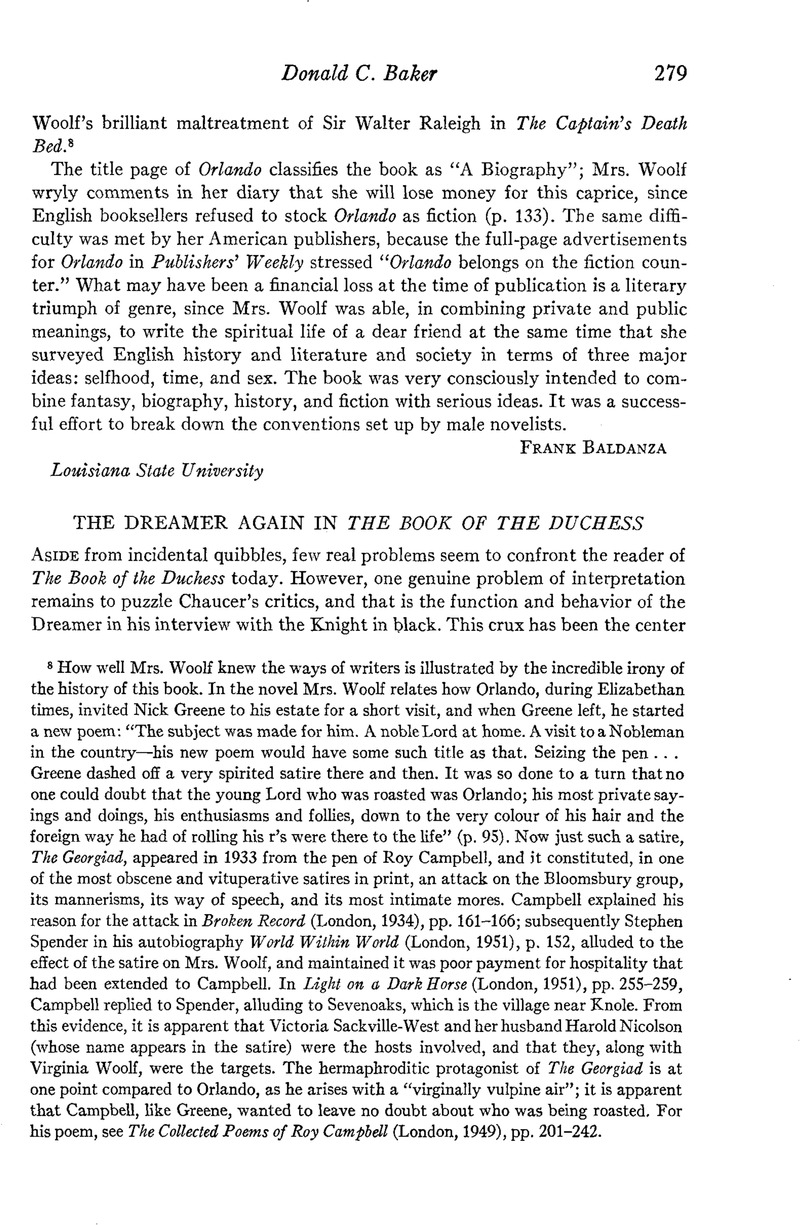No CrossRef data available.
Article contents
The Dreamer Again in The Book of the Duchess
Published online by Cambridge University Press: 02 December 2020
Abstract

- Type
- Notes, Documents, and Critical Comment
- Information
- Copyright
- Copyright © Modern Language Association of America, 1955
References
1 All Chaucer quotations are from the Robinson text.
2 J. S. P. Tatlock, The Mind and Art of Chaucer (Syracuse, 1951), p. 30. Kemp Malone, Chapters on Chaucer (Baltimore, 1951), p. 38, suggests, in passing, that Chaucer might have nodded.
3 P. V. D. Shelly, The Living Chaucer (Philadelphia, 1940), pp. 48–49; Bertrand H. Bronson, “The Book of the Duchess Re-opened,” PMLA, lxvii (Sept. 1952), 877; James R. Kreuzer, “The Dreamer in the Book of the Duchess,” PMLA, lxvi (June 1951), 543–545.
4 Malone, pp. 38–39.
5 Wolfgang H. Clemen, Der junge Chaucer, Kölner Anglistische Arbeiten, xxxiii (Bochum-Langendreer, 1938), 60.
6 G. L. Kittredge, Chaucer and His Poetry (Cambridge, Mass., 1915), pp. 37–38.
7 Samuel Schoenbaum, “Chaucer's Black Knight,” MLN, lxviii (Feb. 1953), 121–122, maintains that, although it is nearly a certain historical fact that the Knight is John of Gaunt, the Book of the Duchess must not be read as an historical document at the expense of its being read as a poem, and as an elegy. With this I certainly agree.


